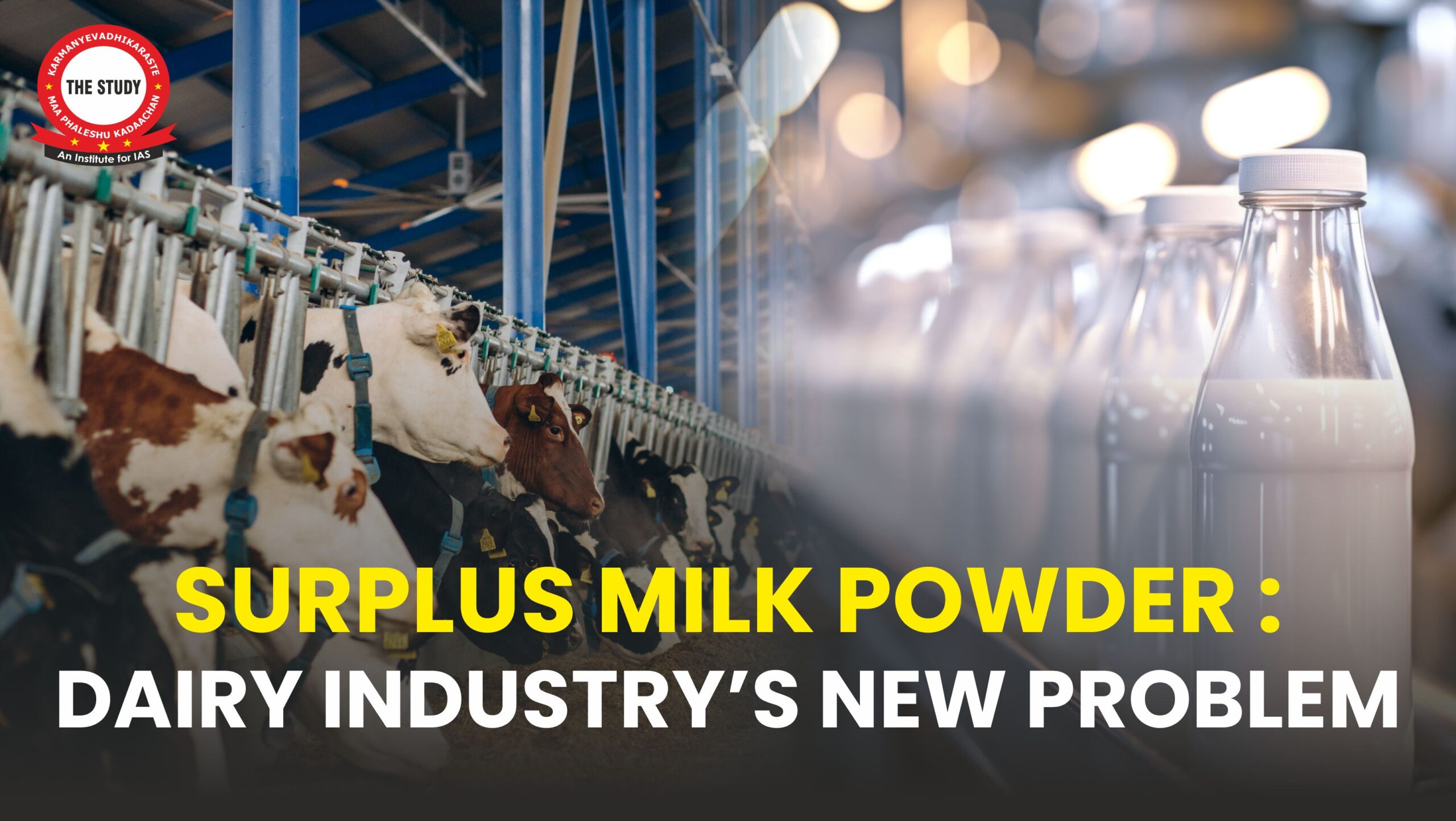Font size:
Print
Surplus Milk Powder: Dairy Industry’s New Problem
Context:
Cooperative and private dairies are holding an estimated 3-3.25 lakh tonnes (lt) of Skimmed Milk Powder (SMP) stocks at the start of the production year.
Skimmed Milk Powder (SMP) :
- Cow milk averages 3.5% fat and 8.5% solids-not-fat (SNF), while buffalo milk has 6.5% fat and 9% SNF.
- As milk is perishable and can’t be stocked, only its solids (fat and SNF) are storable after cream separation and drying of skimmed milk.
- During the “flush” season ( when cattle and buffaloes produce more), dairies convert surplus milk into butter, ghee, and SMP.
- These solids are recombined with water into liquid milk during the “lean” season (when production falls short of demand).
- From every 100 litres of cow milk, a dairy can make about 8.75 kg of SMP (at 8.5% SNF), and 3.6 kg of ghee (at 3.5% fat).
Problem of Surplus in SMP:
- The Problem arises when dairies procure excess milk beyond normal surplus during flush season.
♦ This leads to an oversupply of SMP and butter/ghee with limited demand.
- In India, dairies annually produce 5.5-6 million litres of SMP, of which about 4 million litres are used for recombining during lean periods.
♦ The remaining 1.5-2 million litres are used in various food and industrial products, such as ice cream, biscuits, and baby formula.
- The year 2023-24 saw abundant milk supplies throughout, unlike the previous year, which faced severe shortages.
- This resulted in surplus milk availability, even during lean months, causing only around 2.5 million litres of SMP for reconstitution purposes.
- Instead of the usual opening stocks of 1.5-1.75 million litres, dairies now hold 3-3.25 million litres of SMP.
- With the new flush season beginning and expected to peak, exacerbated by increased buffalo milk production, the surplus SMP issue may intensify.
Impact:
- It led to price declines for cow SMP, yellow butter and ghee.
- Lower prices reduce revenue for dairies, affecting payments to farmers.

Potential Solutions:
- Subsidise SMP exports to boost domestic prices and support dairy farmers.
♦ However, Global SMP prices have dropped making commercial exports less viable.
- R S Sodhi, President of the Indian Dairy Association, proposes to create a buffer stock of SMP to stabilise prices and prevent future milk inflation.
- Develop markets for SMP constituents such as:
♦ Proteins (casein and whey), carbohydrates (lactose), and minerals (calcium, potassium, and phosphorus).
Dairy Sector:
♦ They together contribute 53.11% of total Milk production in the country.
Challenges of the Dairy Sector:
Government Initiatives:
|



